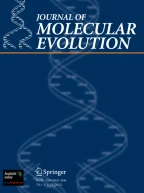Abstract.
The species-specific diversity of codon usage in five eukaryotes (Schizosaccharomyces pombe, Caenorhabditis elegans, Drosophila melanogaster, Xenopus laevis, and Homo sapiens) was investigated with principal component analysis. Optimal codons for translation were predicted on the basis of tRNA-gene copy numbers. Highly expressed genes, such as those encoding ribosomal proteins and histones in S. pombe, C. elegans, and D. melanogaster, have biased patterns of codon usage which have been observed in a wide range of unicellular organisms. In S. pombe and C. elegans, codons contributing positively to the principal component with the largest variance (Z1-parameter) corresponded to the optimal codons which were predicted on the basis of tRNA gene numbers. In D. melanogaster, this correlation was less evident, and the codons contributing positively to the Z1-parameter corresponded primarily to codons with a C or G in the codon third position. In X. laevis and H. sapiens, codon usage in the genes encoding ribosomal proteins and histones was not significantly biased, suggesting that the primary factor influencing codon-usage diversity in these species is not translation efficiency. Codon-usage diversity in these species is known to reflect primarily isochore structures. In the present study, the second additional factor was explained by the level of use of codons containing CG-dinucleotides, and this is discussed with respect to transcription regulation via methylation of CG-dinucleotides, which is observed in mammalian genomes.
Similar content being viewed by others
Author information
Authors and Affiliations
Additional information
Received: 28 December 2000 / Accepted: 9 April 2001
Rights and permissions
About this article
Cite this article
Kanaya, S., Yamada, Y., Kinouchi, M. et al. Codon Usage and tRNA Genes in Eukaryotes: Correlation of Codon Usage Diversity with Translation Efficiency and with CG-Dinucleotide Usage as Assessed by Multivariate Analysis. J Mol Evol 53, 290–298 (2001). https://doi.org/10.1007/s002390010219
Issue Date:
DOI: https://doi.org/10.1007/s002390010219
